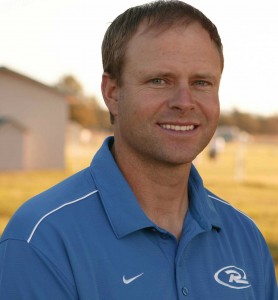In our first article, we defined athletic confidence, and discussed many forms of interference when building confidence in sports, including excessive praise, lack of competence, fear of failure and poor adult mentorship.
One additional hidden factor, coined “The Outlier Effect” by author Malcolm Gladwell, can be one of the most devastating confidence crushers, through no fault of your athletes at all.
One of our biggest problems in youth sports, and early education for that matter, is that we have institutionalized and streamlined our registration protocols into yearlong time blocks. We organize children chronologically instead of developmentally.
 While this certainly makes it easy to organize and segregate classes and teams, it puts our preadolescent children (ages five to thirteen) into situations where some may have a head start, or be denied one, because of birth month.
While this certainly makes it easy to organize and segregate classes and teams, it puts our preadolescent children (ages five to thirteen) into situations where some may have a head start, or be denied one, because of birth month.
Sure, two kids may be five years old, but there may be eleven months of additional development for the child born in January.That difference can be huge at this age and affect them for the rest of their lives. This is the “Outlier Effect.”
The problem lies with how and when we segregate our elite athletes, often at age eight through ten.We then take those “top” athletes and give them the best facilities, the best coaching, more opportunities, better teammates to play with, and stronger opponents to play against.
Perhaps most importantly, we demonstrate to them with our words and actions that they are better than their peers because they have been selected for this opportunity based upon their ability. Yet in reality, this has far more to do with birth month then potential ability to be successful at a sport. It has to do with relative age.Over the course of a year, the differences in performance may be small and not that noticeable.
But when we project what it means to have better facilities, stronger and more engaged teaching, and additional positive reinforcement over ten years, we realize that we are creating kids who are significantly smarter, who have been trained better, and who have more self-confidence than many of their peers, all because of the early “tryout” they went through when they were very young.
This is a result of what sociologist Robert Merton calls the self-fulfilling prophecy, where “a false definition, in the beginning … evokes a new behavior which makes the original false conception come true.”
Take a moment and think about your kids. How are they affected by the” Outlier Effect?” Are they struggling and feeling less confident because they are much younger than their peers, and therefore physically behind? Are they dominating because they have developed physically before their peers?
Both paths have their own pitfalls that a parent and coach need to be aware of.
Oftentimes, physical development overshadows technical development in young athletes. When the emphasis is on winning instead of development, coaches will naturally select the physically gifted – and usually older – players.
These players may rely on their physical advantages, and never develop technical ability. Once everyone grows, they no longer have the tools to compete at a high level, and lose confidence.
At the same time, a developmentally “younger” player may lack confidence because they are not big enough, fast enough, or strong enough to compete.
They need to be given perspective, and encouraged to continue developing their skills. Once they grow, often their technical abilities exceed players who grew first.
We must encourage these athletes to stick with it through their growth spurt, and build their confidence by helping them understand that the reasons they are struggling will soon disappear. Understanding what confidence is and where it comes from is the key to coaching and developing confident athletes.
Confidence building is a process marked by highs and lows, successes and failures.
If you always try to protect your child from disappointment, create excuses for failure, or expect self-belief to happen overnight, your athlete might get a lot of things, but confidence will not be one of them.
The good news, as well known sports psychologist Dr. Jim Taylor says, is that when you strike the proper balance between success and failure.
“Success is not such an intoxicant that it inhibits further growth, and failure is not such a monumental loss that it diminishes the desire to pursue success. Rather, they are both inevitable and necessary parts of the process leading toward achievement and happiness.” This is the path to coaching confident, and competent athletes.
 John O’Sullivan is the author of Changing the Game: The Parents Guide to Raising Happy, High-Performing Athletes and Giving Youth Sports Back to Our Kids. He is a former collegiate and professional soccer player, and has spent the past two decades as a coach at the youth, high school, and college level. O’Sullivan speaks nationwide to coaches, parents, and young athletes about developing athletic excellence and leadership within positive sporting environments. He resides in Bend, Oregon with his family, and can be reached at www.changingthegameproject.com.
John O’Sullivan is the author of Changing the Game: The Parents Guide to Raising Happy, High-Performing Athletes and Giving Youth Sports Back to Our Kids. He is a former collegiate and professional soccer player, and has spent the past two decades as a coach at the youth, high school, and college level. O’Sullivan speaks nationwide to coaches, parents, and young athletes about developing athletic excellence and leadership within positive sporting environments. He resides in Bend, Oregon with his family, and can be reached at www.changingthegameproject.com.
